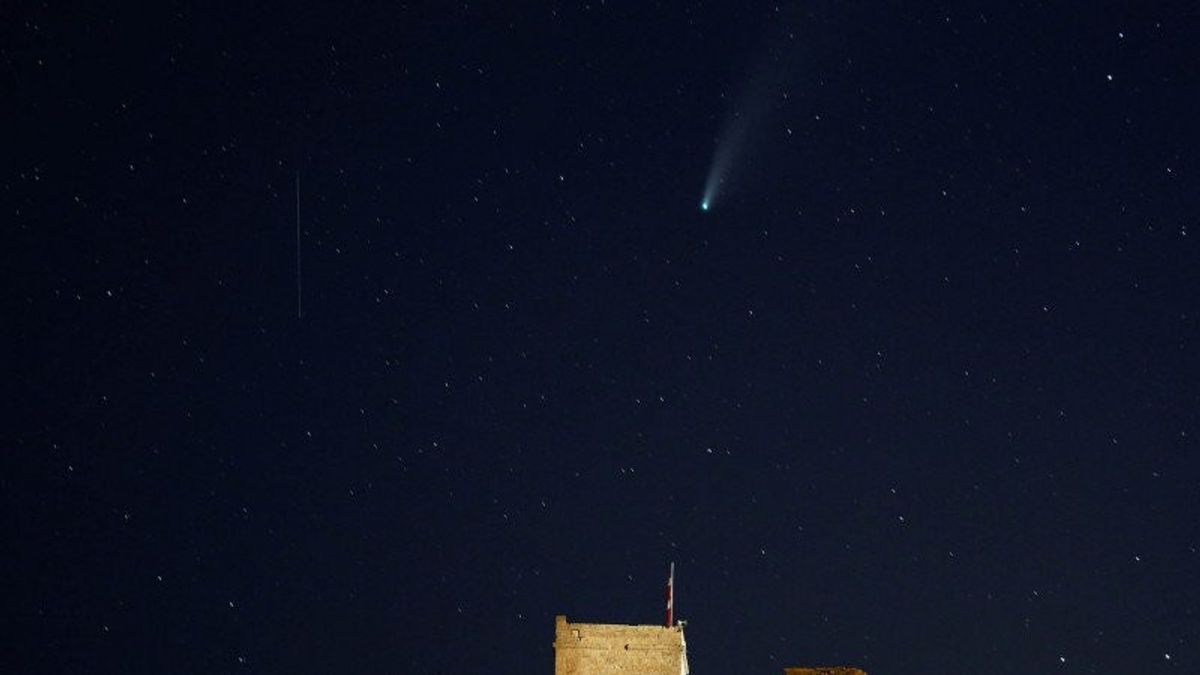JAKARTA - The National Institute of Aeronautics and Space (Lapan) said that the boom in Bali sky was thought to have come from a large meteor that fell.
"When compared to the incident in Bone, there are similarities, so it is suspected that the explosion in Buleleng was also caused by a large meteor that fell. The meteor caused a shock wave that was heard as an explosion," said astronomer and associate researcher Lapan Rhorom Priyatikanto quoted by Antara, Monday, January 25. .
Rhorom said the meteor was thought to have an initial size of several meters, smaller than the asteroid Bone.
According to Rhorom, meteors that have reached Earth's surface are not a potential hazard. Space objects do not contain harmful radioactive elements, the minerals contained in meteors are not harmful to the environment.
On October 8, 2009 the people of Bone heard an explosion accompanied by shaking the glass in their house. Residents also saw trails of smoke in the sky. Lapan's suspicion that it was a large meteor finally received evidence from NASA researchers using infrasound data.
Infrasound data indicate a falling meteor estimated to be 10 meters in diameter. It was later discovered that the closest BMKG seismograph recorded a 1.9-magnitude vibration.
On January 24, 2021 at around 11.00 WITA, a number of Buleleng residents in Bali reported light trails in the sky and a fairly clear sound of thuds.
Earthquake sensors at the Meteorology, Climatology and Geophysics Agency (BMKG) Station in Singaraja detected vibration anomalies for about 20 seconds starting at 10:27 WITA.
The vibration has an intensity of about 1.1 magnitude. Based on this information, it is possible that the incident was a falling object incident in space.
Rhorom said the orbit.sains.lapan.go.id monitoring system did not show any artificial objects or space debris that were thought to pass or fall in Indonesian territory. This increases the possibility that the events observed in Buleleng were related to natural objects.
A large meteor, also known as a bolide or fireball, could enter the atmosphere, catch fire, and fall near Buleleng.
In the process, the meteor can trigger shock waves to thumping sounds that are even detected by earthquake sensors.
Most of the meteors burn in the atmosphere and it could be that a small part remains and falls to the Earth's surface (land or sea). Large meteor fragmentation is also common when the meteor reaches an altitude of about 100 kilometers above the Earth's surface.
Recently, there has been no meteor shower activity, except with a very small intensity. However, it should be noted that by 2021, there have been about 40 large meteor sightings (fireball) in various parts of the Earth.
The International Meteor Organization (IMO) received and recorded reports of sightings of fireballs quite well. Several events were accompanied by a loud thud that was heard quite clearly.
The Minor Planet Center (MPC) managed by the International Astronomical Union (IAU) did not announce any near exposure to an asteroid of potential danger. On January 24, 2021, there were at least three asteroids <100 meters in diameter passing with a minimum distance several times the Earth-Moon distance.
"If indeed what happened in Buleleng was the fall of a large meteor, then the object is not associated with an asteroid that was previously detected and cataloged," said Rhorom.
The English, Chinese, Japanese, Arabic, and French versions are automatically generated by the AI. So there may still be inaccuracies in translating, please always see Indonesian as our main language. (system supported by DigitalSiber.id)












